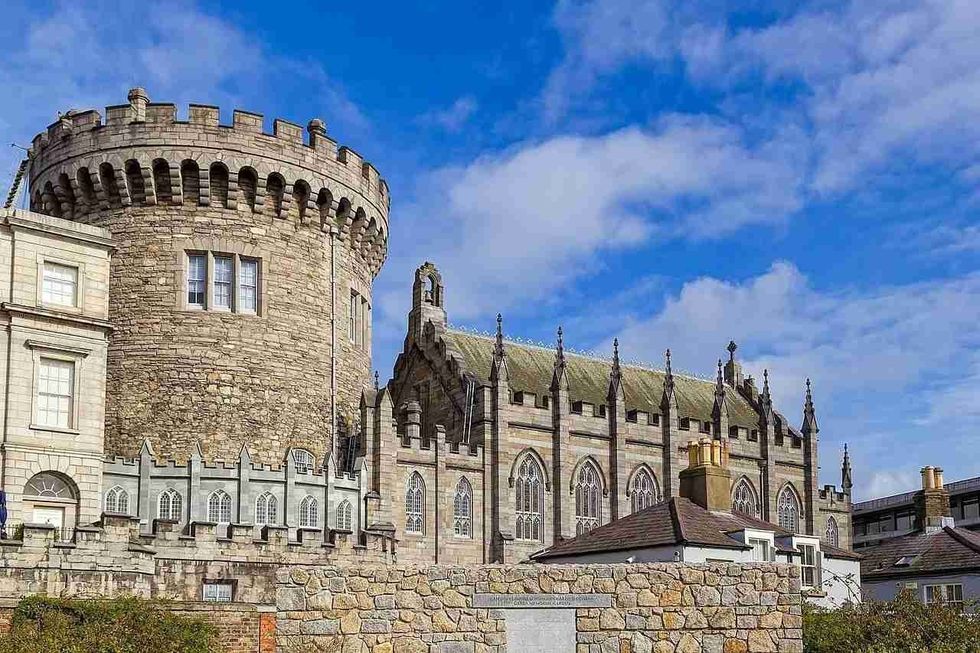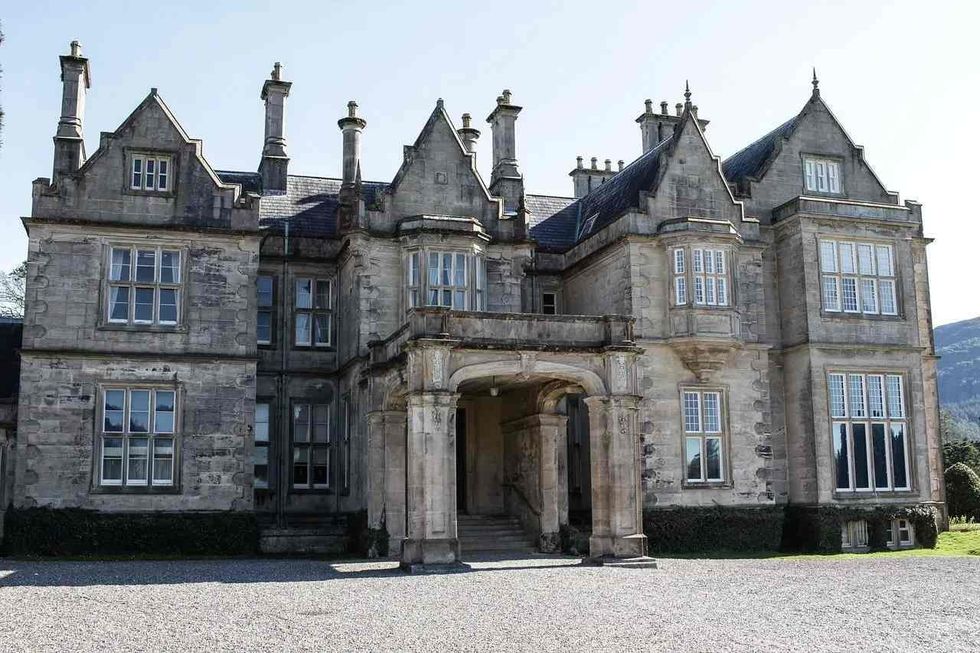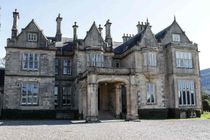History Of Ireland For Kids: Explaining The Incredible Irish Background

The Republic of Ireland has 26 counties, making it the largest part of Ireland.
The growth in the economy of the Republic of Ireland has changed the education system. Almost 37% of the Irish population have a college degree, which is one of the highest percentages across the world.
Ireland is an island located in the North Atlantic. The North Channel, St. George's channel, and Irish sea separate this island from Great Britain at a distance of 11-120 mi (18-193 km).
Ireland is the British Isles' second-largest island, Europe's third-largest, and Earth's 20th largest. Ireland is geopolitically divided into Northern Ireland, a part of the United Kingdom, and the Republic of Ireland, covering five-sixths of the island.
The terms Ireland and Eire are derivations of an Old Irish word Eriu, an Irish goddess. In the first century AD, Gaelic Ireland emerged.
Irish and English are the official languages of the Emerald Isle. The Irish language was the native dialect of Irish people for so many years and was likely introduced in the Iron Age, during the Norman invasion.
The affluent and populous Dublin is the capital of Ireland, with more than one-fourth of the total population of Ireland. The second-largest city of Ireland is Cor, which is a southwest city and port.
Ireland is 32,595 sq mi (84,421 sq km) in area and is located in the northwestern side of Europe. Dublin's population is around 1,173,179 (urban area) and 1,347,359 (traditional County Dublin or Dublin region) as per 2016 data.
Also, the Greater Dublin Area population is 1,904,806. In 2012, Dublin was the European Capital of Science.
There are four universities and many higher education institutions there. A lot of traditional industries in Dublin, such as textile manufacturing, distilling, brewing, and food processing, have been gradually declining.
Dublin was at its lowest unemployment rate in the second quarter of 2018, falling to 5.7% as per the Dublin Economic Monitor reports. The oldest University in Dublin is the University of Dublin, which is present in the city center and dates back to the 16th century.
If you enjoy reading these facts about the history of Ireland for kids, then make sure to read some more interesting facts about Ireland's economy and Ireland's culture here at Kidadl.
What is a brief history of Ireland?
Settlers or hunter-gatherers first reached Ireland around 7,000-6,000 BC. They came from Europe and Great Britain, probably by a land bridge.
Irish history is long and tragic. However, today it is one of the best places to live in the world.
Around 700 BC, Celtics from Britain and Gaul went to Ireland. Christianity reached Ireland in 350 AD.
The Vikings invaded Ireland in 795, landing in Dublin Bay. Later, the Irish King Brian Boru defeated the Vikings in 1014.
Even though the Vikings faced defeat, trade became a vital part of the Irish economy, and the towns that Vikings had ruled flourished. In the year 1297, the first Irish parliament meeting was held in Dublin. Later, in 1348, the black plague struck Ireland, killing almost 30% of the Irish population.
After King Harry VIII died in the year 1547, a nine-year war started between England and Ireland, in which Ireland was defeated. Irish Earls fled in the year 1607, and it was known as the 'Flight of the Earls'.
The English and Scottish were mostly found in north Ulster in 1609. After the Irish people rebelled with France's assistance, the Irish Catholics (or Irish nationalists) were given freedom through the Catholic Relief Act.
The Fenian rising, in which the Irish Republican Brotherhood rose against British rule in 1867, occurred due to unfair British laws. After World War I started, the Irish Republican Army (IRA) started fighting against the British army in 1919.
Northern Ireland became a part of the United Kingdom, and the remaining parts, including Southern Ireland, were established as the Irish Free State in the British empire. The Government of this Irish Free State rebuilt Dublin's city center with a new Irish parliament.
Later in 1922, the Irish civil war broke out between the National Army and the IRA. This civil war was due to varying religious beliefs and also the British interference in Irish politics.
The mastermind behind this Irish War of Independence was Michael Collins. After the declaration of the Irish Free State within British territory, this land was divided into Northern Ireland and the Republic of Ireland. Ireland became a part of the United Nations in 1955.
Troubles started between loyalists and the IRA in 1969 in Northern Ireland. This conflict lasted until 1998.
The Anglo-Irish agreement was signed in 1985. A hunger strike started in 1976 and went on until 1981. This took place during the Irish republican prisoners' troubles.
This started in Northern Ireland as the convicted paramilitary prisoners' special category status was taken away. These protests were represented with black flags to honor those who died due to hunger.
The Irish government was formed by 1920, giving freedom to the Republic of Ireland and Northern Ireland to form their parliament. The Prime Minister of Ireland is indirectly elected with actual political power and serves as the head of the government. The President is elected by a vote with a ceremonial place and is the head of the state.
Famine In Ireland
The great famine (also called the famine, the great hunger, and the Irish potato famine) was an age of disease and starvation in Ireland that started in 1845 and went on until 1849.
The greatest disaster in Irish history was the Great Famine. This was caused by potato fungus or blight, which was unintentionally brought over from North America to Central Europe and was then transported to Ireland in 1845.
This caused the failure of potato crops for about four years, killing many people and forcing others to emigrate to foreign lands. People primarily emigrated to North America, Scotland, Australia, South Wales, and England.
Potatoes were affordable and were also the main part of Irish people's diets. Although wheat and oat were also grown in Ireland, the government exported them just like pork and cattle.
More than a million people died from starvation and disease. People were aware of the fact that potato crops would fail once in a while, but this was an unexpected disaster.
Potato crops failed for many years, and the world slowly became aware of the Irish people's situation. By the year 1854, anywhere between one and a half to two million Irish people left the country due to starvation, eviction, and harsh living conditions.
The British government was slow to react, with some members agreeing that this problem of Ireland must be left to run its course despite the exportation and failure of crops. Also, landlords in Ireland evicted many people as they could not pay rent, which sent them wandering from one town to another, searching for food.
The landlords had middlemen who would collect rent from tenants and hand it back to the owner. This would allow them to exploit their tenants.
The majority of Catholics lived in insecurity and poverty, which was around 80% of the population. Skibbereen town in the West Cork region was affected to a point where international help was a necessity.
Although the United States was at war with Mexico, two of their warships were dispatched with supplies for the starving population. Irish people who were left behind eventually received help from groups like the Quakers that set up kitchens to save the declining population.
The government also provided workhouses for the sick and starving population so that they did not feel that they were receiving free food.
Donations were also made by many in the international fundraising across South Africa, Mexico, Italy, Russia, Venezuela, and Australia. The British Relief Association was also one such fundraising group that raised a lot throughout Australia, England, and America.

Ireland's Wildlife And Nature
Although a small island, Irish wildlife is plentiful and varying. This is no surprise when Ireland is home to such places as Phoenix Park, which is the largest urban park in Europe.
Bogs and grasslands make up the most land in Ireland. Grassland regions are pastures and meadows with grasses like meadow foxtail, venal grass, timothy grass, and red fescue.
Some lowland pasture and meadow flowers are pignuts, meadow thistle, yellow rattle, and dandelion. Some raised bog species are bell heather, common heather, bog myrtle, royal fern, and soft rush.
Open waters are found in Ireland like lakes, rivers, ponds, and canals with water species such as water avens, marsh marigolds, and yellow water lilies. Karsts present in Ireland are inland scarps and cliffs.
Artificial habitats like roads, railways, quarries, walls are home to common daisies, wall pennywort, and nettles. Some woodland plants found in this country are bluebells, honeysuckles, and blackthorns.
Only around 26 land mammal species are native to Ireland, as it is isolated from mainland Europe. There are also no wild snakes in Ireland because the sea stops many animals from moving to the island from mainland Europe.
There are only one lizard species, three amphibian species, and two wild mouse species. There is a controversy around the National animal of Ireland.
Many think that the right choice is airish elk, but it is extinct. Another choice is the Irish hare that is also a native to this land.
These hares are quite popular for their boxing behavior in the mating season. Many animals are found in the Burren National park, Wicklow Mountains National Park, Ballycroy National park, Connemara, Glenveagh National Park, and Killarney. There are few dangerous animals in Ireland.
Gray wolves were quite common around Ireland until the start of the 18th century. As per folklore, the popular ancient High Kings of this land called Cormac Ulfada were raised by these gray wolves.
Amphibians found in Ireland are natterjack toads, smooth newts, and European brown frogs. Around 400 species of birds have been recorded around Ireland, many of them being migratory.
Some birds move to Ireland in winter while some of them arrive in summer. There are 40 freshwater species in Ireland's lakes and rivers.
Irish People And Culture
The Irish culture is all about Irish music, art, literature, language, sports, cuisine, and folklore.
The economical turnaround of Ireland gave it the nickname the Celtic Tiger. The Irish government's efforts of attracting businesses made the country the second wealthiest in all of Europe.
Celtic culture, language, and art highly influenced Irish society and culture during the Iron Age. This country is a place with storytellers. This is a tradition dating back to the Celtic bards who recited and recorded the history of Ireland.
A lot of great writers come from this country, with four of them receiving Nobel Prizes for their literature. Irish people are also great at sports and music.
The people of Ireland are of Celtic origin. However, the recorded history of Irish people states that they are Gaelic. Many Englishmen and Scots settled in Ireland when both British and Anglo-normans arrived.
People are Northern Irish, Irish, British, or a combination. Also, most recorded evidence states that Ireland's culture is Gaelic.
The British, Scottish, and Anglo-normans also impacted Irish culture. However, in today's Ireland, the cultural difference can be spotted between Catholic and Protestant people. When Irish people emigrated due to the great famine, their culture and festivals spread across the world, like Saint Patrick's Day or Halloween.
The Irish cuisine and food were influenced by the British after the 17th-century. Food and cooking styles were altered due to the Great Famine.
Potato is a popular food around Ireland, although it is a native vegetable of South America. It was popular among poor Irish people in the 18th-century, as this was the only thing they could afford.
Other traditional foods of Ireland are coddling, boxty, soda bread, Irish stew, bacon with cabbage and potato, and colcannon (mashed potato with cabbage or kale and butter).
There are early references to drink and food in Irish literature. Honey was widely used for making mead.
Excavations provided evidence of animal consumption. Animals that were eaten were pigs, sheep, and goats, with the most common meat being from pigs. Fish, wild geese, and poultry were also famous.
People consumed a wide range of native nuts and berries, particularly hazelnuts. Goosefoot and knotgrass seeds were also present and people might have used these for making porridge.
The common religion of Ireland is Christianity in the form of Protestantism and Roman Catholicism. So, the majority of people are called Roman Catholics.
Halloween or the Celtic festival called Samhain originates from this land. Irish people have contributed a lot to the world's literature in both English and Irish languages.
However, the most known works are written in English. Irish dance and folk music are also famous around the world and were refined in the 60s. In the mid 20th century, as Ireland was trying to modernize, the popularity of traditional music fell, particularly in urban regions.
There are more than just Irish and English people in the country, with many others being Polish, Hiberno-English, and Mid-Ulster English. The Polish language ranks as second most spoken in Ireland after English, with Irish in the third spot.
The country is also known for traditional pub culture, which is more than just drinking. These pubs are similar to cafes, and people meet neighbors and friends in a good atmosphere.
The most popular sports played in Ireland are soccer, Gaelic football, rugby union, golf, and hurling. Almost 80% of events are covered by four sports. A popular sport is Gaelic football.
Other sports include aerobics, swimming, snooker, billiards, and cycling. A small number of people play cricket, squash, boxing, hockey, and tennis. There are many art galleries and museums in Ireland that offer cultural events.
Here at Kidadl, we have carefully created lots of interesting family-friendly facts for everyone to enjoy! If you liked our suggestion for the 'History of Ireland for kids', then why not take a look at 'Facts about Irish food' or 'Christmas in Ireland facts'?
We Want Your Photos!
More for You
Bachelor of Engineering specializing in Aeronautical/Aerospace Technology, Master of Business Administration specializing in Management

Arpitha RajendraBachelor of Engineering specializing in Aeronautical/Aerospace Technology, Master of Business Administration specializing in Management
With a background in Aeronautical Engineering and practical experience in various technical areas, Arpitha is a valuable member of the Kidadl content writing team. She did her Bachelor's degree in Engineering, specializing in Aeronautical Engineering, at Nitte Meenakshi Institute of Technology in 2020. Arpitha has honed her skills through her work with leading companies in Bangalore, where she contributed to several noteworthy projects, including the development of high-performance aircraft using morphing technology and the analysis of crack propagation using Abaqus XFEM.
Disclaimer
1) Kidadl is independent and to make our service free to you the reader we are supported by advertising. We hope you love our recommendations for products and services! What we suggest is selected independently by the Kidadl team. If you purchase using the Buy Now button we may earn a small commission. This does not influence our choices. Prices are correct and items are available at the time the article was published but we cannot guarantee that on the time of reading. Please note that Kidadl is a participant in the Amazon Services LLC Associates Program, an affiliate advertising program designed to provide a means for sites to earn advertising fees by advertising and linking to Amazon. We also link to other websites, but are not responsible for their content.
2) At Kidadl, we strive to recommend the very best activities and events. We will always aim to give you accurate information at the date of publication - however, information does change, so it’s important you do your own research, double-check and make the decision that is right for your family. We recognise that not all activities and ideas are appropriate for all children and families or in all circumstances. Our recommended activities are based on age but these are a guide. We recommend that these ideas are used as inspiration, that ideas are undertaken with appropriate adult supervision, and that each adult uses their own discretion and knowledge of their children to consider the safety and suitability. Kidadl cannot accept liability for the execution of these ideas, and parental supervision is advised at all times, as safety is paramount. Anyone using the information provided by Kidadl does so at their own risk and we can not accept liability if things go wrong.
3) Because we are an educational resource, we have quotes and facts about a range of historical and modern figures. We do not endorse the actions of or rhetoric of all the people included in these collections, but we think they are important for growing minds to learn about under the guidance of parents or guardians.







